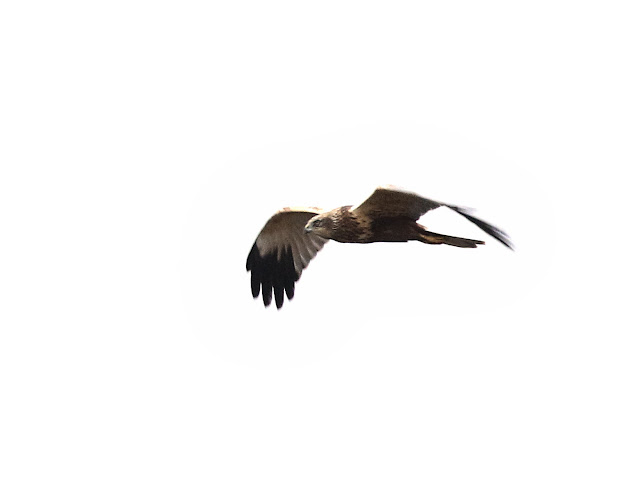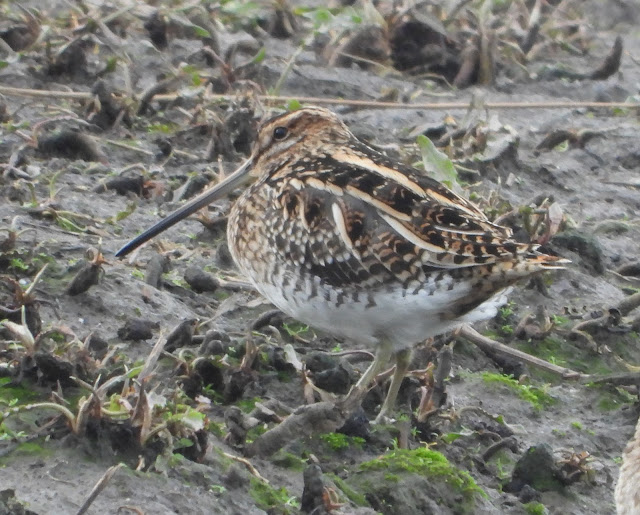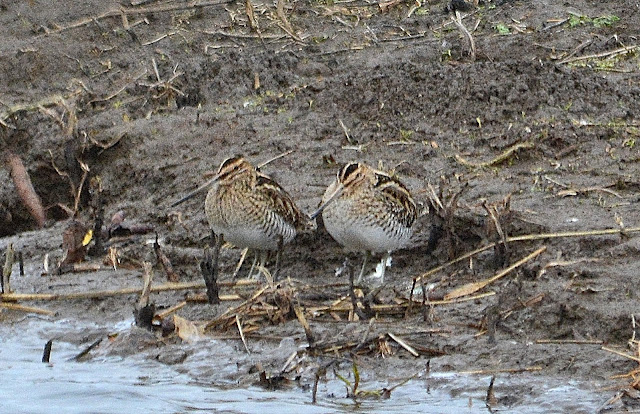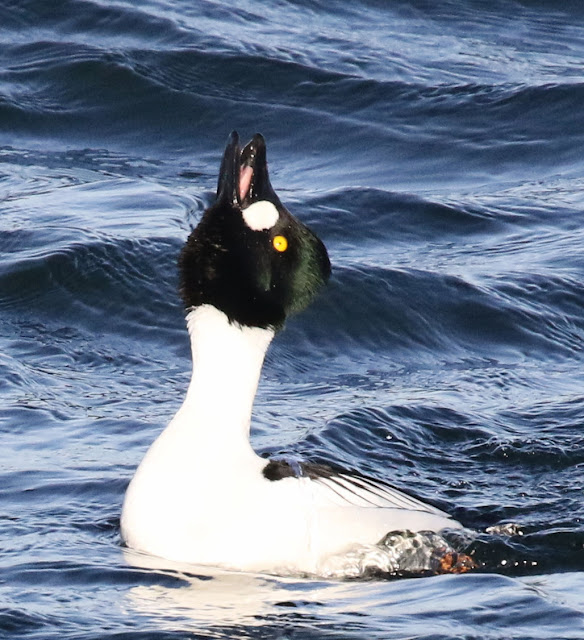Over the weekend we had at least 9 Long- tailed Tits in the garden having a drink and bathe. Unfortunately, this was too late in the day for the RSPB Garden Birdwatch figures.
The Odd One Out Among Long-tailed Tits
On Tuesday we made our last planned visit of the winter to Ness End Farm. It was a grey morning, but dry and not too windy. From the Main Hide the highlight was a male Marsh Harrier and a dashing flotilla of Tufted Ducks. Target Hide has been the most productive recently, but the road hedgerows were being hacked back with noisy machinery and the vast majority of Ducks had moved elsewhere. The usual suspects came to the fence, but this time there was no sunlight, so no photos.
After lunch I checked out Waters’ Edge, as I’d heard improvements had been made. Yes, some vast reedbeds had had swathes cut through them to make viewing easier, but there was very little variety of wildfowl. There were Tufted Ducks and Gadwall in beautiful reflected light, but at the far south-eastern part of the reserve a Bittern flew up and headed towards me, but it sank back down into the reedbed before I could raise my lens. Just after that in one particular channel 4 delightful pairs of Shoveler swam around in circles disturbing sediment for their respective partners.
On Wednesday we travelled to Blacktoft Sands for the first time in many months. The morning started well with a large flock of Fieldfare just outside the car park and Pink-footed Geese heading south over the locked Visitor Centre. We tried the hide on the old footprint of Xerox, and there were many wildfowl here, including large groups of Wigeon & Tufted Ducks. However, a more careful examination resulted in a significant number of hidden Snipe. Marshland held fewer individuals, but the Snipe were easier to observe. The long walk to Ousefleet resulted in frisky Konic Ponies, but a disappointing number of bird species. A late highlight was a single Dunlin in a large flock of Lapwings. More Dunlin were present after lunch.
First Hide was better than it is in the spring with Wigeon being the most noticeable species. Townsend was very quiet because of the nearby ongoing disturbance at Singleton. The latter was out-of-bounds as essential maintenance was taking place at Singleton.
The highlight of the afternoon, and the whole day, was probably the Waxwing seen from the visitor centre in the area of the bird table. When it flew off west it had 2 companions.
On Thursday we went to Tophill Low and for the first time since the pandemic we headed for the north area. We couldn’t find the Scaup, Red-Crested Pochard or Smew. However, we did enjoy a great view of a pair of Goldeneyes - some thought it was the best sighting of this species they’d ever had.
We went to North Marsh to find the hide deserted, but with Long-tailed Tits just outside. We hadn’t been there long before I spotted a male Kingfisher on the far left. It remained there the whole time we were in the hide. We had to wait a lot longer in the afternoon before the Kingfisher showed itself. In the meantime we saw a Jay, a few Little Egrets, a Goldeneye, a Buzzard, a flock of Redwings and heard a squealing Water Rail.
Walking further north we spotted many Redwings, although very few landed somewhere we could examine them closely. As we approached Hempholme some Fieldfare were also spotted. Less expected was a Fox running towards us, but when he spotted us, he turned tail and headed towards the woodland, being bombarded by Common Gulls on the way. There were also three Little Egrets and a pair of low-flying Collared Doves - now a locally rare species. A Marsh Tit was near the feeders, but its visits were rather fleeting.









































































No comments:
Post a Comment